The Russian Toy, also known as the Russkiy Toy, is a captivating breed of canine companion that has captured the hearts of dog lovers worldwide. These petite yet spirited dogs are known for their affectionate nature, playful demeanor, and elegant appearance. Originating from Russia, the Russian Toy has a rich and intriguing history, and their journey to prominence in the canine world is a testament to their endearing qualities.
History of the Russian Toy

The Russian Toy’s lineage can be traced back to the English Toy Terrier, a small breed that was highly favored among the Russian aristocracy during the 18th and 19th centuries. Through selective breeding, the Russian Toy gradually emerged, showcasing a distinct temperament and appearance that set it apart from its English ancestors.
The Russian Toy’s existence took a dramatic turn during the tumultuous period of the Russian Revolution. The breed was nearly decimated, as its association with the aristocracy led to its decline. However, a dedicated group of breeders tirelessly worked to preserve the Russian Toy, ensuring its survival and eventual resurgence.
In the 1990s, the Russian Toy began to gain international recognition, slowly but surely establishing itself as a cherished breed in various countries. In 2008, the American Kennel Club (AKC) granted the Russian Toy full recognition, further solidifying its position in the canine world.
Physical Characteristics
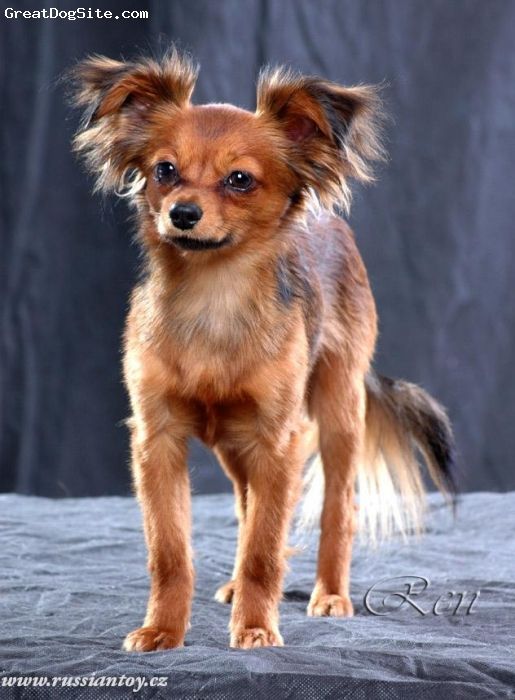
The Russian Toy is a true embodiment of elegance and grace, boasting a petite stature and a refined appearance. These dogs come in two coat varieties: smooth-coated and long-haired. The smooth-coated variety is characterized by a sleek, short coat that lies flat against the body, while the long-haired variety possesses a flowing, silky coat that enhances their charming appeal.
Regardless of coat variety, the Russian Toy exhibits a well-proportioned body structure and a distinctive head shape. Their almond-shaped eyes sparkle with intelligence, and their erect ears lend an air of alertness. The Russian Toy’s tail is typically carried high, adding to their overall elegance.
Temperament and Trainability
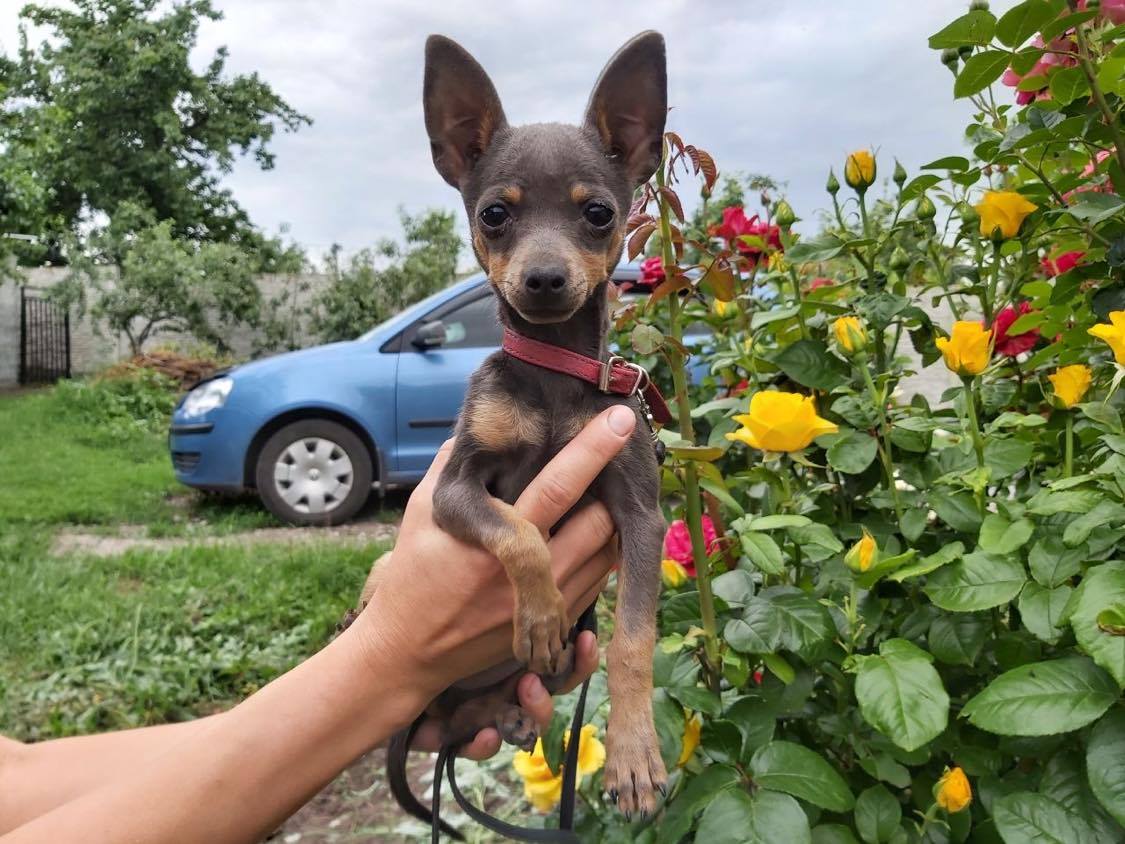
The Russian Toy is a true companion dog, forming strong bonds with their owners and thriving on companionship. They are affectionate and playful, always eager to engage in interactive games and cuddle up for moments of warmth and affection.
Despite their small size, Russian Toys possess a courageous and determined spirit. They are alert and protective of their loved ones, always ready to sound the alarm at any perceived threat. However, they are not overly aggressive and can be easily trained with positive reinforcement methods.
Care and Grooming
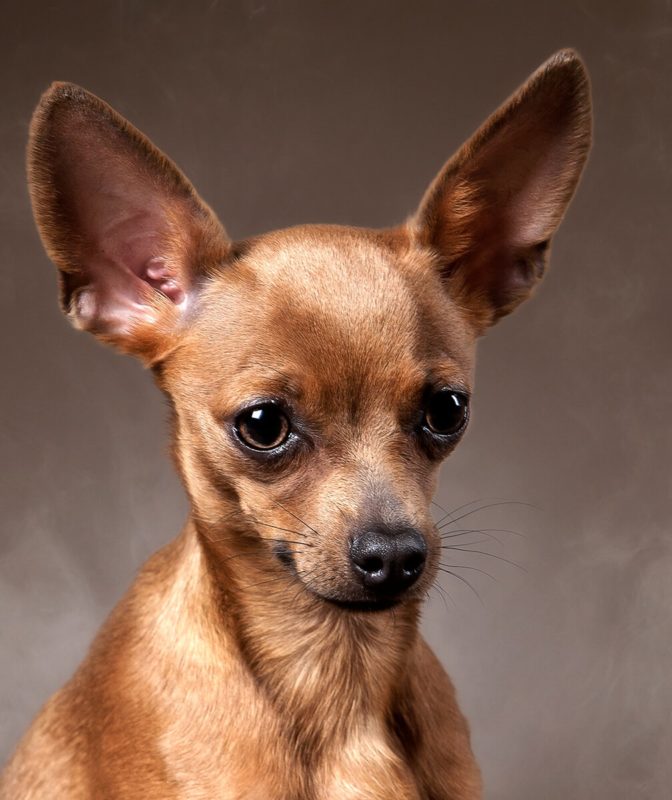
Russian Toys are relatively low-maintenance dogs, requiring minimal grooming. Their smooth or long coats can be easily managed with regular brushing to remove loose hair and prevent mats. Bathing is only necessary on an occasional basis.
Regular exercise is essential for maintaining the Russian Toy’s physical and mental health. Daily walks and playtime sessions are sufficient to keep them energized and engaged. However, it is important to be mindful of their small stature and avoid overexertion.
Health
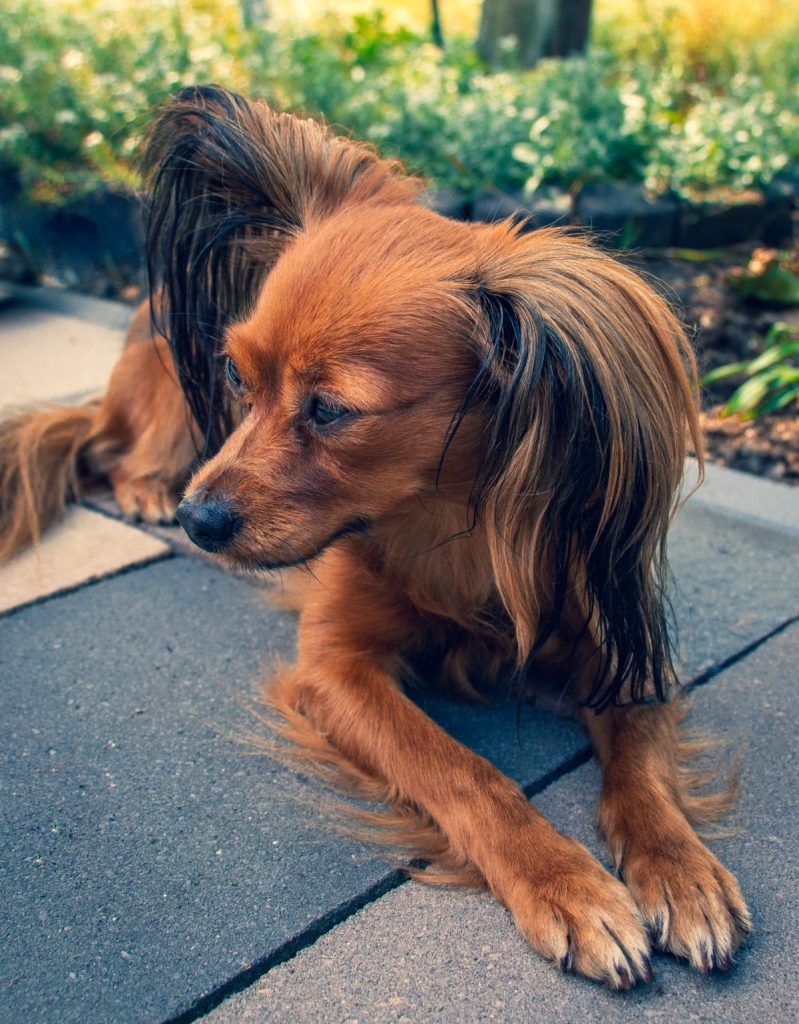
Russian Toys are generally considered a healthy breed, with an average lifespan of 12 to 14 years. However, they are susceptible to certain health conditions, such as patellar luxation, which is a dislocation of the kneecap. Regular veterinary checkups are essential to monitor their health and address any potential issues early on.
Russian Toy Terrier
Overview

The Russian Toy Terrier, also referred to as the Russkiy Toy, is a relatively new breed that traces its ancestry to small English terriers brought to Russia in the early 1800s. Selective breeding over the next hundred years or so resulted in the diminutive Russian Toy Terrier we know today.
Despite nearly going extinct after the Russian Revolution, the Russian Toy Terrier was preserved through dedicated breeders. It has seen a resurgence in popularity over the last few decades.
This charming toy breed stands between 8-11 inches tall and weighs 4-6 pounds fully grown. It has a moderately long, silky coat that comes in a variety of colors and patterns.
The Russian Toy Terrier is an affectionate, lively companion dog. Its small size makes it well-suited to apartment living. The breed has an average lifespan of 10-14 years.
Pros
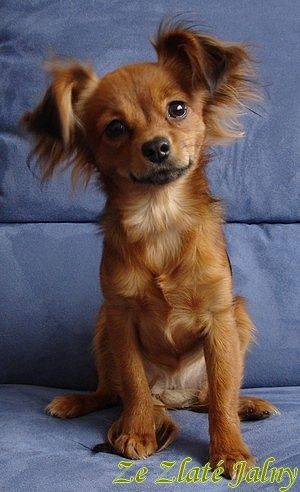
- Affectionate, loyal pets
- Minimal shedding
- Travel-friendly portable size
- Generally healthy breed
- Minimal exercise requirements
- Alert, watchdog abilities
- Low grooming requirements
- Adapts well to different living situations
Cons
- Susceptible to patellar luxation
- Prone to separation anxiety
- Fragile due to small size
- Can be difficult to housetrain
- May exhibit stubborn streak
- High energy level may be too much for some owners
- Prone to small dog syndrome if not trained properly
Similar Breeds

The Russian Toy Terrier shares some similarities with breeds like:
- Chihuahua
- Yorkshire Terrier
- Maltese
- Toy Fox Terrier
- Papillon
- Italian Greyhound
However, the Russian Toy possesses its own distinct appearance and temperament. Key differences include its elegant silhouette, moderately long coat, lively yet gentle temperament balanced by an alert presence.
Advice for Owners
- Give them consistent training and socialization early on.
- Monitor their weight carefully.
- Supervise young children and toddlers when interacting.
- Contain them or put on a leash when outdoors.
- Gently comb their coat several times per week.
- Schedule annual vet exams to monitor for health issues.
- Maintain annual teeth cleanings.
- Avoid roughhousing due to their delicate structure.
- Keep playtime mentally and physically stimulating.
Opinions of Owners
Most Russian Toy owners highlight the breed’s endearing temperament. They describe them as affectionate, curious, and playful companions who think they are “big dogs.” Owners seem thrilled with their portability for travel and adaptability to city living. Some do caution about their tendency for demanding attention at times. Overall, owners appear head-over-heels for this charismatic toy breed.
Comparison to Similar Breeds
While sharing similarities with other toy breeds, the Russian Toy stands out in some key ways:
Vs. Chihuahua
- More relaxed, gentle temperament
- Lower tendency for aggression or anxiety
- Usually better with children
- Longer coat requires more grooming
Vs. Yorkshire Terrier
- Calmer indoor energy levels
- Less prone to barking
- Greater affection towards strangers
- Shorter coat in smooth coat variety
Vs. Papillon
- Lower exercise requirements
- Stands/walks on shorter legs
- Wider variety of coat colors/patterns
- Smaller upright ears instead of fringed Papillon ears
In the end, while comparable in size, the elegant and cheerful Russian Toy has a distinctive spirit all its own.
Advices on Russian Toy
Buying a Russian Toy
When buying a Russian Toy puppy, be sure to find a responsible breeder who health tests their dogs. Ask to see proof of health clearances. Reputable sellers will welcome health and home checks. Avoid pet stores or those selling multiple litters simultaneously. Expect to pay $800-$2000+ USD depending on pedigree and breed lines. Be prepared for a waitlist.
Signs of a Responsible Breeder
- AKC/UKC registered parents
- Only breeds one litter at a time
- Allows home visits and vet reference checks
- Health tests breeding dogs for patellar luxation and eye issues
- Asks buyers questions to ensure good home
- Provides health guarantee
- Supplies health and vaccination records
Transitioning a Russian Toy Home
Bringing a Russian Toy puppy home requires preparation. Below are some tips for a smooth transition:
- Puppy-proof your home by removing dangerous objects and securing potential hazards
- Set up an exercise pen with pads for indoor potty training
- Buy a crate and premium puppy food recommended for toy breeds
- Have several chew toys on hand to ease teething pain
- Prepare a regular feeding and walk routine to start training
- Arrange for pet health insurance to offset future vet costs
- Sign puppy up for training/socialization classes right away
Take the first few weeks slowly – your new Russian Toy needs time to acclimate. Be patient and keep sessions brief as you two get to know each other.
Ongoing Russian Toy Care Tips
Caring for a Russian Toy requires:
Exercise
A 30-60 minute daily walk plus indoor playtime. Take care not to overexercise them given their small joints.
Grooming
- Brush smooth coat variety weekly. Long coat variety needs daily brushing.
- Bathe every 1-2 months using gentle dog shampoo.
- Trim hair around feet + eyes as needed.
- Brush teeth weekly. Trim nails monthly.
Feeding
- Feed a premium dry kibble formulated for toy breed puppies or adults.
- Provide constant access to fresh, clean water
- 1/2 to 1 cup divided into 2-3 small meals daily
Health
- Schedule annual vet exams, bloodwork, dental cleanings
- Administer preventatives for fleas/ticks/heartworm
- Consider pet insurance for emergency costs
With proper care, exercise, training, and veterinary attention, your charming Russian Toy can remain a devoted companion for years to come. Reach out to your vet right away if you notice any concerning symptoms or health changes.
Opinions on Russian Toy
The Russian Toy dog breed seems to inspire delight and loyalty among those who welcome one of these petite canines into their homes. Here’s what current Russian Toy owners have to say about life with this charming toy breed:
Lively Companions
“My little Lyka has so much spunk in such a small package – she keeps me smiling and laughing every day!”
“Wrigley has two speeds – play mode and nap mode. But even his naps are adorable. He brings a lively spirit to our home!”
“We can’t believe how energetic Freddie is for being so tiny. He acts like he’s 10 feet tall! But he isn’t yappy or neurotic, thank goodness.”
Adaptable Apartment Dogs
“I was worried Izzy would feel cooped up in our apartment all day, but she seems completely content looking out the window!”
“The Russian Toy breed is perfectly happy in small spaces. As long as Azlan gets his daily walk, the rest of the day is for cuddling and playing inside.”
“One of the reasons we chose a Russian Toy was for their ability to thrive in apartments. Roux doesn’t even mind when we leave as long as her favorite toy is nearby.”
Playful Yet Gentle
“Grimm is like a little comedian – he always makes me laugh with his silly antics!”
“Yes, Pixie has plenty of spunk, but she knows how to dial it back when needed. She’s so gentle and patient with our toddler.”
“It’s funny how even the dog park pups treat Rocket more delicately due to his size. But he holds his own when playing and wears the big guys out!”
Velcro Dogs
“Lucy wants to be involved in everything we do. She even tries to climb in the shower!”
“We call Frankie our little barnacle. He refuses to be left out of any family activity and prefers being in constant contact.”
“Fair warning to potential Russian Toy owners – these dogs demand your attention! Coco is my adorable, needy shadow at all times.”
Comparisons of Russian Toy with Similar Breeds
How does the Russian Toy compare to other popular small companion breeds like the Yorkshire Terrier, Papillon, and Chihuahua? Here’s a breakdown:

Physical Appearance
Russian Toy: Petite, only reaching 8-11″ tall and 4-6 pounds. Elegant silhouette. Expressive almond eyes. Smooth or long coat in many colors. Tail carried upright and curving over back.
Yorkshire Terrier: Small dog up to 7 pounds with floor-length, steel blue and tan silky coat. Compact frame. Dark eyes and ears standing erect. Tail docked to medium length.
Papillon: Weighs 5-10 pounds. Distinctive winged ears. Fine silky coat in white with patches of color. Delicate, slender boned body. Long, feathery tail arches over back.
Chihuahua: Ranges from 3-6 pounds. Large personality for tiny body. Smooth short coat or long coat. Varied colors. Large, round eyes. Tail slightly curved over back.
Temperament
Russian Toy: Affectionate, cheerful, and highly social. Gentle and patient. Occasional independent or willful moments. Devoted companions. Intelligent and active. Good watchdogs despite small size.
Yorkshire Terrier: Tenacious, tomboyish risk-takers. Bossy with willful tendencies. Devoted to their people yet suspicious of strangers. May be snappy with grabby children. Independent thinkers.
Papillon: Happy extroverts. Intelligent, responsive, and willing to please. Enjoy learning tricks. Alert watchdogs that are wary of strangers. Do best with gentle children due to delicate structure.
Chihuahua: Saucy, deeply loyal, and constant companions. Can be wary of strangers and strange dogs. May bond strongly with one person. Confident despite small size with moderate energy. Need regular positive interactions.
Care Requirements
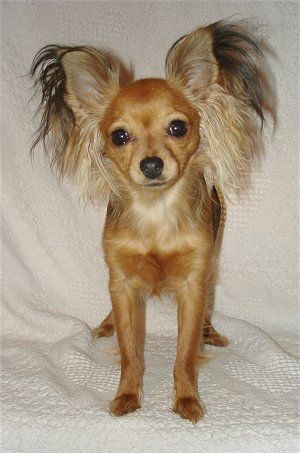
Russian Toy
- Moderate energy – needs daily walks plus playtime
- Occasional brushing/combing for smooth coat variety; daily for long coat
- Rare shedding
- Easy to train using positive reinforcement
- Does well in apartments with adequate exercise
Yorkshire Terrier
- Fairly high energy – daily walks plus play
- Daily brushing required for floor-length coat
- Frequent shedding
- Can be stubborn yet enjoys learning tricks
- Does well in apartments if exercised
Papillon
- Moderate energy levels – daily walks, play
- Twice weekly brushing of silky coat
- Light shedding
- Quick to train and highly capable
- Thrives equally in houses/apartments
Chihuahua
- Moderately energetic with short intense bursts
- Weekly brushing of smooth coat; daily for long coat
- Seasonal shedding
- Early socialization is key for best temperament
- Can adapt to any living situation
The Russian Toy’s smaller care needs compared to the Yorkshire may make it better suited for busy owners. Their trainability gives them an advantage over the strong-willed Yorkie as well. Meanwhile, the Papillon’s daintier build means Russian Toys can better handle children. Their moderate energy edge over Chis also comes in handy for households where people are away longer hours.
Video
Conclusion
In the end, while the Russian Toy shares some similarities with other toy breeds, they have a unique elegance, trainability, and loyal personality all their own. Their affectionate nature, curious spirit, moderate exercise needs, and overall sound health make them ideal companion dogs in a range of lifestyles and living situations. Whether an owner is home often or away for longer work hours, the adaptable Russian Toy tends to thrive when given ample love and attention. Considering adding one of these lively charmers to your household? Reach out to responsible local breeders to be put on their waitlist so you can welcome home one of these exceptional toy pups.